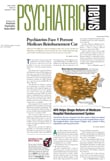A number of years ago, the Swedish filmmaker Ingmar Bergman made “The Seventh Seal.” During one of the scenes, a knight from the Middle Ages plays a game of chess with the figure of Death. If the knight loses, he will have to die.
That movie could symbolize the situation that many problem gamblers face today. Problem gamblers desperately want to win, but usually end up losing—their money, their relationships, sometimes even their lives. Lifetime suicide rates for members of Gamblers Anonymous over the years, and in various countries, have ranged from 8 percent to 21 percent.
Now the risk of suicide appears to be even greater among pathological gamblers who seek residential treatment, a study reported in the September Journal of Clinical Psychiatry reveals. The study was conducted by Otto Kausch, M.D., staff psychiatrist for the gambling treatment program at the Louis Stokes Veterans Administration Medical Center in Brecksville, Ohio.
The gambling treatment program is a 30-day residential program that serves veterans from all over the United States. On average 115 patients are admitted annually, and the vast majority are admitted from a waiting list. Kausch thus decided to conduct a study of all 114 consecutively admitted patients to the gambling treatment program from September 2000 to September 2001 to see what percentage of them had made suicide attempts.
All of the subjects met DSM-IV criteria for pathological gambling. Relevant information about the subjects was obtained from admission histories, chart reviews, physical exams, and a number of structured instruments.
Scrutinizing these data, Kausch found that 45 (40 percent) of the subjects had made a suicide attempt at some time in their lives—a much higher rate than that found for members of Gamblers Anonymous throughout the years.
But Kausch wanted to go further with his data—that is, identify some of the characteristics that separate problem gamblers who tried to commit suicide from those who did not. He found that 73 percent of the suicide attempters had a history of some form of substance abuse, compared with 62 percent of the nonattempters. He also found that among the gambling subjects with a history of drug and/or alcohol dependence, impulsivity scores differentiated suicide attempters from nonattempters. In other words, the more impulsive a gambler with a substance abuse problem was, the greater the risk that he or she would attempt suicide.
He likewise found that virtually all of his suicide attempters had some kind of psychiatric diagnosis exclusive of substance abuse problems. However, he found no significant differences between suicide attempters and nonattempers as far as specific psychiatric diagnosis, say depression, was concerned.
Further, “based on my experience with our highly impaired patient sample,” Kausch told Psychiatric News, “I would say that a combination of a disruptive early life and comorbidity in general seems to be significant in terms of risk for suicide attempts.”
Forty-six-year-old “Jerry,” Kausch pointed out, fits the profile well. As a child, Jerry had been emotionally and physically abused by his mother and stepfather and sexually abused by a neighbor. Jerry’s stepfather was a gambler and drug user. Jerry started gambling and using marijuana at age 16, then became an alcoholic and heroin user in his early 20s. He was admitted to a hospital eight times because of depression and suicide risk.
Finally, 64 percent of Kausch’s subjects reported that they had made their most recent suicide attempt out of desperation over their gambling.
“This study is important for practicing clinicians,” Richard McCormick, Ph.D., a pioneer in gambling research and a former director of the Mental Health Care Line for the Veterans Administration Healthcare System of Ohio, told Psychiatric News. “The incidence of pathological gambling has grown as access to legalized gambling has increased exponentially in this country in the past 15 years. The [pervasiveness] of casino gambling, lotteries, and most recently Internet-based gambling makes it available literally to everyone. Growing rates of problem gambling in women, older Americans, teenagers, and preteens are alarming for many reasons, including the risk of depression and suicidality in these groups.”
The study, “Suicide Attempts Among Veterans Seeking Treatment for Pathological Gambling,” is posted on the Web at www.psychiatrist.com/privatepdf/2003/v64n09/v64n0908.pdf. ▪

